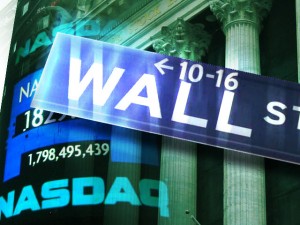Here’s today’s ‘Just A Minute’ bringing you a 60 second summary of what’s happening in the financial markets:
Main Trading Event Of The Day: U.S. Trade Balance @ 12.30 GMT
WHAT WE’RE WATCHING TODAY
Wealth Gap Slowing U.S. Economic Growth
Economists argue that a rising wealth gap has complicated the U.S. and the widening gap between the wealthiest Americans and everyone else has made the economy more prone to boom-bust cycles while slowing the 5-year-old recovery from the recession. They believe that economic disparities appear to be reaching extremes which need to be watched because they’re damaging to growth. The rising concentration of income among the top 1 percent of earners has contributed to S&P cutting its growth estimates for the economy. In part, because of the disparity, it estimates that the economy will grow at a 2.5 percent annual pace in the next decade, down from a forecast five years ago of a 2.8 percent rate. S&P advises against using the tax code to try to narrow the gap and suggests that greater access to education would help ease wealth disparities. Heavy taxes meant to reduce inequality could remove incentives for people to work and cause businesses to hire fewer employees because of the costs involved. Income disparities can hurt growth since consumers tend to become more dependent on debt to continue spending, thereby worsening the boom-bust cycle or they curb their spending, and growth improves only modestly, as it has during the current recovery.
Gold Rises As Ukraine Tensions Hurt Equities
Gold nudged up slightly today and could benefit from market risk aversion as fears of increasing military action along the Ukraine border put global equities under pressure. Spot gold rose 0.2 percent to $1,289.80 an ounce after closing flat in the previous session. U.S. gold was up about $6 to $1,291.20. Geopolitical tensions in Ukraine and the Middle East have largely been responsible for gold’s 7 percent gain this year. Gold, often seen as alternative investment to riskier assets such as equities, could gain if stocks fall further. Bullion investors continued to keep an eye on economic data, after a Tuesday report showed new orders for U.S. factory goods rose more than expected in June. Recent U.S. data pointing to strengthening economic activity has weighed on gold’s appeal on fears that monetary policy could soon be tightened. The physical markets have failed to provide support to prices recently due to the seasonally quiet summer period.
Apple Buybacks Pay Most Ever; Walt Disney Earnings Higher Than Expected
With Apple’s repurchases staking a claim as the most profitable on record, buybacks remain one of America’s most popular antidotes to bears. The company is up 25 percent since it spent $18 billion on its own shares between January and March and rallied 32 percent after a $16 billion buyback in 2013. Those are the highest four-month returns among the 20 biggest quarterly repurchases by any company since 1998, according to data. Apple’s $18 billion repurchase in the first quarter and the $16 billion it spent between April and June of 2013 are the two biggest buybacks by any company in data compiled by S&P starting in 1998. They came as the stock advanced as much as 77 percent over 15 months after falling to a 16-month low in April 2013. The return followed the weakest period for Apple shares in the last decade. After jumping almost 900 percent from the end of 2005 through September 2012 and becoming the world’s largest company by market value, Apple plunged 44 percent in seven months amid concern about new products and competition.
Meanwhile, Walt Disney, the entertainment conglomerate posted earnings per share of $1.28, excluding items, on $12.47 billion in revenue, compared to an expected EPS of $1.17 on $12.16 billion in sales. Shares edged higher in after-hours trading.
That sums up today’s highlights! We hope you have a profitable day on the markets.







